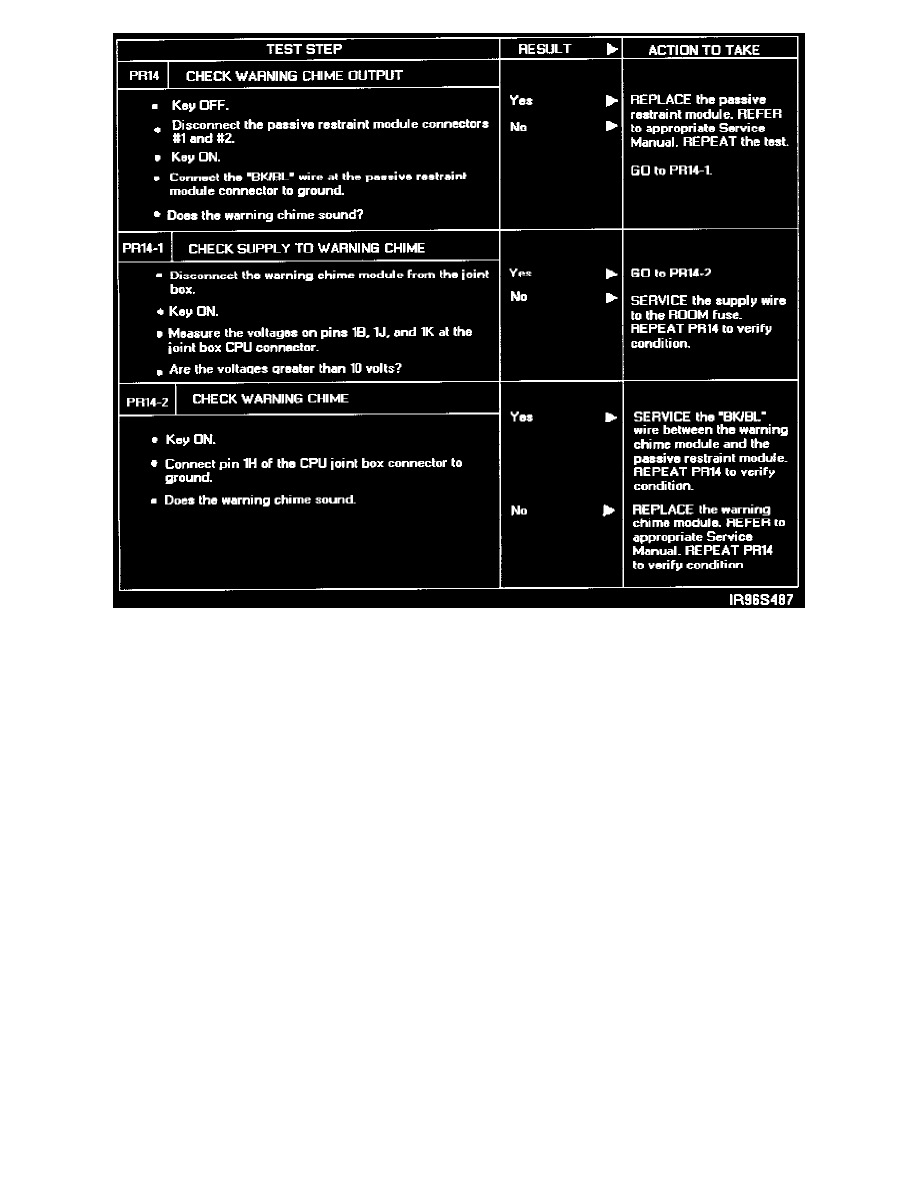Probe V6-182 3.0L (1990)

Diagnosis And Testing
Probe Seat Belts - Description and Operation
The passive restraint system controls the operation of the belt carrier.
The seat lap belts are to be manually connected by the driver/passenger and should always be worn.
After entering the vehicle and closing the door, place the ignition key to the ON position. The shoulder belt carrier is moved from the A-pillar (OFF
position) to the B-pillar (ON position). At the same time, the BELTS warning indicator lamp and chime are on for four to eight seconds or until the
shoulder belt is latched.
The shoulder belt automatically adjusts to allow comfort and freedom of movement. It locks tight during extremely hard braking, or impacts of 3 km/h (5
mph) or more.
When the door is opened, regardless of the ignition key position, the shoulder belt carrier moves from ON to OFF position, provided the inertia switch
contacts are open.
WARNING
PLACE THE LAP BELT SNUGLY AND AS LOW AS POSSIBLE ABOUT THE HIPS, NOT ABOUT THE WAIST. FAILURE TO DO SO MAY
INCREASE THE CHANCE OF INJURY IN THE EVENT OF A COLLISION.
WARNING
FRONT SEAT OCCUPANTS (INCLUDING PREGNANT WOMEN) SHOULD WEAR THE LAP BELTS IN ADDITION TO THE SHOULDER
BELTS FOR OPTIMUM PROTECTION. REAR SEAT OCCUPANTS (INCLUDING PREGNANT WOMEN) SHOULD ALSO WEAR THE LAP
BELTS IN ADDITION TO THE SHOULDER BELTS FOR OPTIMUM PROTECTION.
If the lap or shoulder belt retractor jams, free the belt by doing the following:
^
Pull on the belt with both hands to tighten it on the retractor spool.
